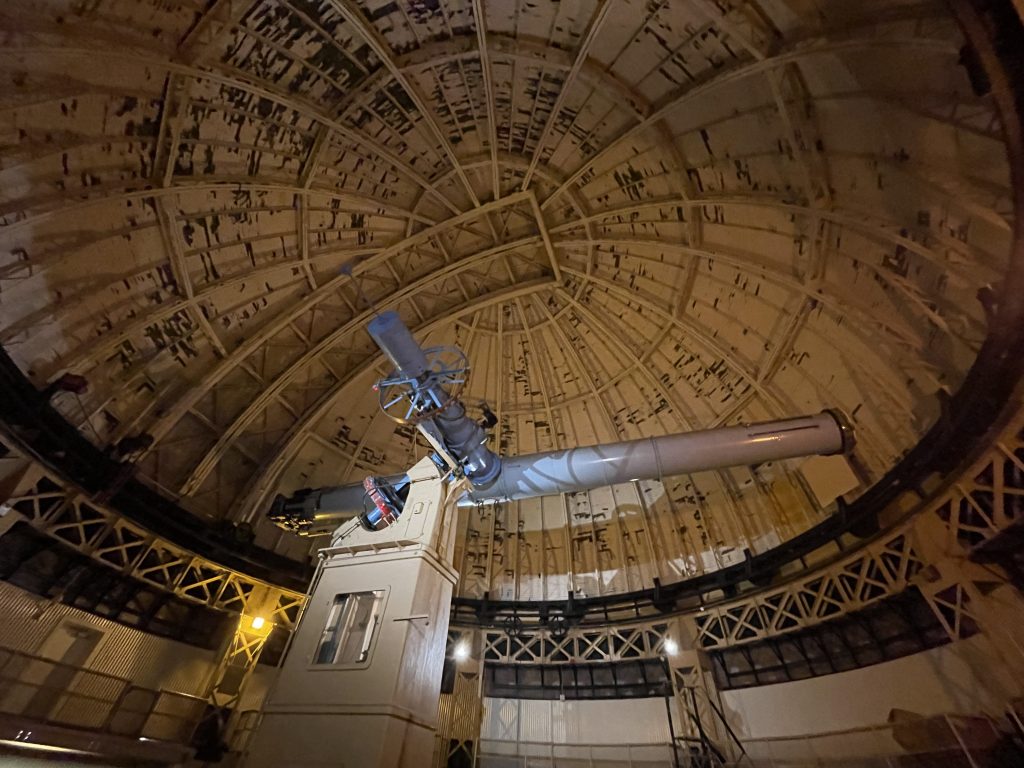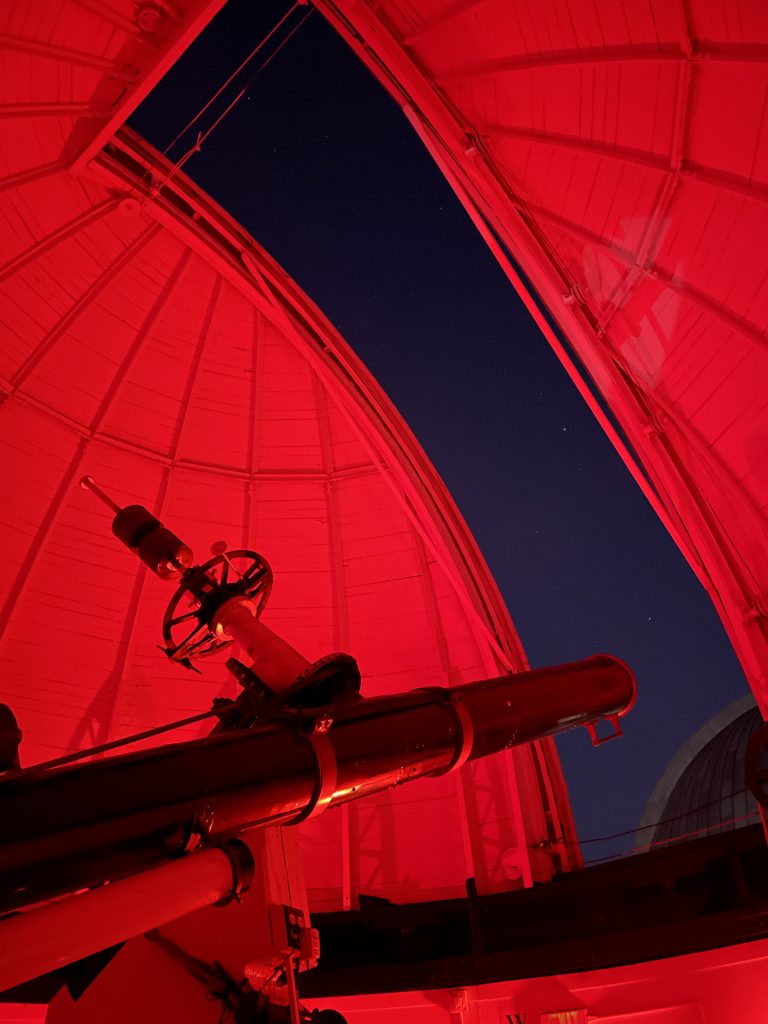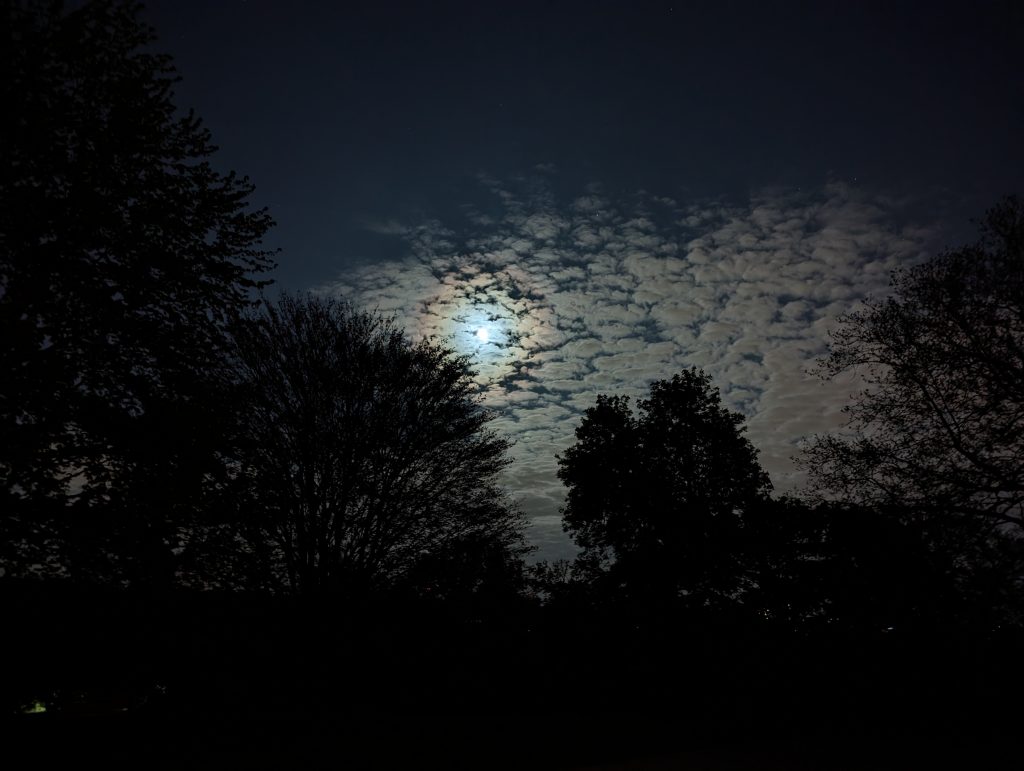Doug and I did a nighttime tour of the Allegheny Observatory in Pittsburgh, Penn. The observatory is one of the most significant astronomical facilities in the history of the science, and was key in the early efforts to use the concept of parallax to measure the distances between stars that are close together in the sky.
The Observatory is part of the University of Pittsburgh, and its area of active research today is the search for extrasolar planets (you know what those are, right?). The tour is focused on the history of the observatory and showing off the building and its historical telescopes. It had been raining for days, but at the right moment the sky cleared and we were all able to take a peek at Venus.
The observatory society dates back to 1859 and the current building to 1912, and it truly seemed a wonder that such a building could be built at that time. The rotating dome housing their large 30” refractor telescope was absolutely huge. It is the third largest refracting telescope in the world — any lens much bigger than 30″ would be crushed by its own weight as it swiveled to change views. Today, large telescopes are reflecting telescopes that utilize a mirror and thus don’t have the constraints of the refracting telescopes. Oh, and when the telescope needs to be pointed very high in the sky, the entire floor in the room drops as much as 15 feet to accommodate it. (This is 1912 technology!)
The real surprise was to learn of the achievements of their first director, Samuel Langley, who had many major accomplishments during his tenure. One was the standardization of time using a small telescope to observe the position of the stars as they crossed the celestial meridian; this enabled the railroads to standardize time across stations, which had previously been a real problem, as each station just set its own time. Imagine the timetables! Through a subscription service, the Allegheny Observatory was literally selling time — until the federal government decided to put them out of business by building the U.S. Naval Observatory outside of Washington, D.C., and offer the same service at no cost.
Langley became Secretary of the Smithsonian Institution, which made him in effect the nation’s First Scientist. Besides writing one of the earliest books on astrophysics, he was also interested in manned flight and conducted experiments on aerodynamics that resulted in one of the earliest books on that science, as well. He very nearly beat the Wright Brothers to the air, but his first flying machine crashed upon takeoff and the Wrights succeeded while Langley’s craft was in the shop being re-built.
Another local astronomical innovator connected with the observatory was John Brashear who developed methods for creating high-quality telescope lenses as well as methods for silvering mirrored surfaces. At one point lenses and optical equipment made by his company were in use in every major observatory in the world. Brashear’s lenses are still in use at the Observatory today, and the company he founded still exists as part of L-3 Communications.
The ashes of both men are interred in a small crypt in the basement of the Allegheny Observatory, near to the place where their earliest scientific contributions were made.







